Clarinets are some of the most flexible and beautiful sounding instruments for new musicians to learn. But, they’re also an instrument that can quickly go out of tune and ruin the sound of your practice. It’s important to learn how to tune a clarinet early, so you can develop an ear for the notes and learn to tune on the fly.
Fortunately, the actual process of tuning a clarinet isn’t that difficult. A little finicky at times, and it takes experience both as a musician and with your particular clarinet. Still, you should be able to learn to tune your clarinet quickly.
We’ll cover the process of tuning, what you can expect from most clarinets, and the many different factors that can affect and improve the sound of your instrument.
Clarinet Tuning Basics

One of the first things you need to know when you’re tuning your clarinet is that clarinets are transposing instruments. That means that the note you tune to, to match accompanying instruments, will not necessarily be the note they tune to. It’s the responsibility of you, as a clarinet player, to know what note you should tune to.
Generally, to match the other instruments in an ensemble, you will tune one full note below the other instruments. So, a concert C would have clarinets tuning to their D, and so on. One of the most common tunes you’ll need to learn, is how to tune a b flat clarinet.
But before you can learn any tuning, you need to know some basics about your new instrument. All clarinets are temperature sensitive. That means that the temperature of the room you’re in, as well as the temperature of the instrument itself, affect its sound.
Playing your instrument will naturally warm it up since your breath is warm.
The warmer your instrument becomes, the sharper, or higher, it is likely to play. The converse is also true. A cold clarinet will tend to play most notes flat.
Because of that, it’s important to warm up your clarinet by playing for a few minutes before you tune. If you’re playing in a group, it may also be important to adjust the tuning of your instrument as you play, especially if the temperature in the room changes.
You should also know that different notes and different areas of your clarinet may need to be tuned separately. Rarely will you be able to adjust only one section of your clarinet and be completely in tune.
Most clarinets are also considered in tune when they are playing most notes very slightly sharp. But this is also a matter of personal and ensemble preference.
Step-by-Step Clarinet Tuning
1. Warm Up Your Clarinet
The very first thing you need to do to tune your clarinet is to warm it up. Take a few minutes to blow air through the clarinet, play a sustained low note, or run through some scales and fingering exercises.
Pay attention to your fingering and mouth position (embouchure) while you’re doing this, but the pitch of your instrument is less important and will change as you play.
How long you’ll need to warm up your instrument depends on your clarinet and the room you’re playing in. It will take a little practice, but eventually, you’ll be able to hear when your clarinet is warmed up enough to tune.
2. Starting from the Top
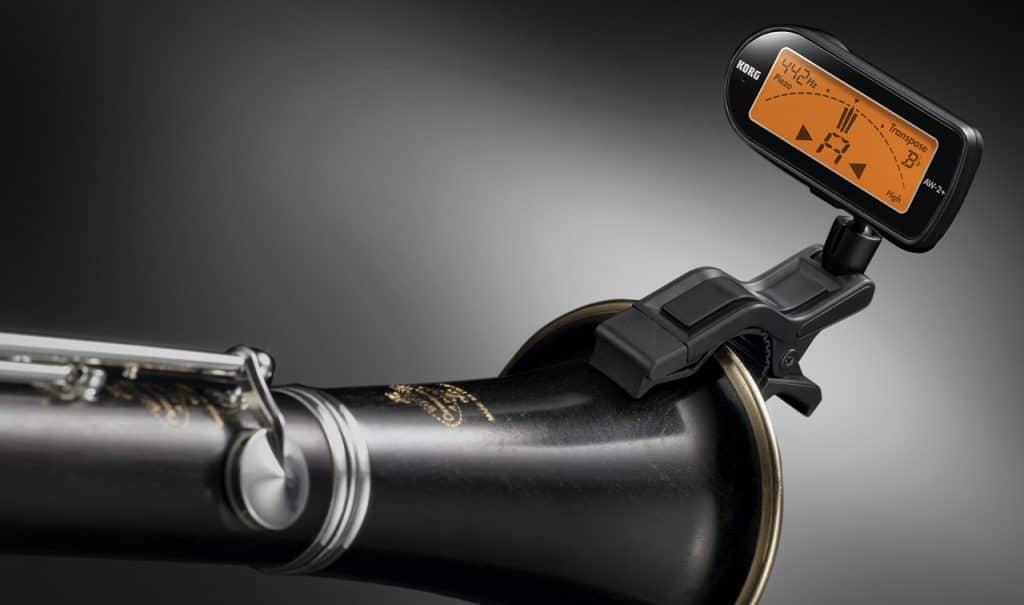
Once your clarinet is ready to tune, you should start at the barrel. At this point you’ll want to have your tuner ready, or else the keyboard or other instruments you’re using to tune with.
Eventually, you’ll know how to tune without a tuner, since you’ll know what each note and key should sound like. However, in the meantime, you’ll want to have an aid handy. A chromatic tuner with a snark (part of the tuner clipped on the clarinet itself) will be easiest to start.
Chances are, you’ll be just a touch sharp when you start tuning. For learning purposes, you can tune to any note you like, but C and B flat are most common. Starting at the lowest octave of the note, a low C, play the note and watch your tuner to see where you’re at.
Grip the barrel gently but firmly and pull it out about ½ millimeter to adjust. Test the note again. Repeat until you’re right on the note, or only register very slightly sharp. If you’re a little flat, you’ll use the same process but push the barrel about ½ millimeter in.
3. Adjust the High Notes
The next step is in the middle of the clarinet. Use the same not you started with at the barrel to test if your clarinet is in tune. It takes similar adjustments, about ½ millimeter at a time, to tune it at the middle.
Remember to keep an eye on your bridge key as you make adjustments here. You’ll need to keep it properly aligned, or line it back up before you start playing.
Some experienced players will also adjust lower down at the bell of the clarinet, which affects mainly the highest notes. However, this type of tuning is less common and isn’t necessary for most players and ensembles.
If you choose to tune at the bell, it’s the same process repeated for the third time.
4. When Your Clarinet Doesn’t Behave
You’ll probably notice that your clarinet isn’t perfectly in-tune on every note. That’s normal, and the slight variations shouldn’t matter in the long run.
However, if certain notes are consistently problematic, or highly out of tune, it can be a sign that you need to try alternate fingering for those notes. If changing your fingering doesn’t help, or your clarinet is badly out of tune on only one or two notes, that can be a sign that you need to take it to a repair shop.
A good repair person can make slight alterations to your clarinet to bring those notes back in tune.
How the Barrel Affects Tuning
The barrel mostly affects your lower left-hand notes, but it will adjust all the notes further down the clarinet slightly. That’s why you start with the barrel.
If you start in the middle, you’ll only have to adjust it all over again when you tune at the barrel.
If you over adjust, you’ll probably notice it most with those left-hand notes, so you should only use those notes to test your tuning here.
How the Mouthpiece Affects Tuning
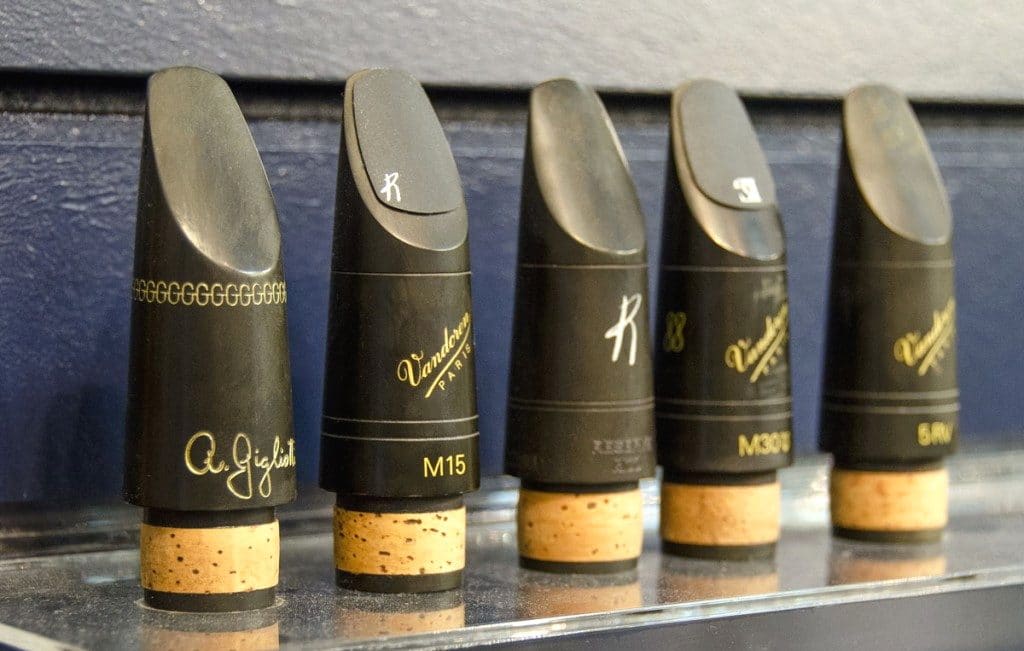
Your mouthpiece can be adjusted when your clarinet is extremely sharp, but usually won’t need adjusting. Small adjustments here will have considerable effects on every note you play on your clarinet.
You can also change the size of your mouthpiece to affect tuning but doing so can be an expensive solution. If you do replace your mouthpiece, longer will adjust your tuning lower/flatter, while a shorter mouthpiece will adjust your tuning higher/sharper.
Even though it’s rare to tune here, it’s still important to learn how to tune with your mouthpiece so that it’s an option when and if you need it at a rehearsal or performance.
How Do You Tell if Your Clarinet is Out of Tune?
The easiest way to tell if your clarinet is out of tune is to listen for it. This is easiest if you’re playing with other clarinets or instruments since you’ll be able to hear the difference between your clarinet and the others.
However, and early indication before your ear is really trained to hear the difference, is to listen to how pleasant your clarinet sounds. Early on, you won’t necessarily know if your clarinet is sharp or flat, but it won’t sound right.
You may also notice that you’re adjusting your mouth position. This can be an unconscious way to correct the tune if you’re only slightly out. Done intentionally, this is a huge advantage. But, if you’re doing it unintentionally, it’s a sign that your clarinet is going out of tune.
FAQ
How to tune a clarinet without a tuner?
Eventually, you’ll have an ear for this, but in the meantime, you should try to tune with some reference. You can learn how to tune a clarinet to a piano, which is mostly a matter of knowing which notes correspond.
You can also tune with an app or computer program, but that means you’ll need to learn to tune a clarinet without a snark. The snark attachment makes chromatic tuners more accurate, but you can tune without one. Just expect to see a little more variation in the pitch the tuner detects.
How do I tune a clarinet to a piano?
The first thing you need to know to tune to a piano is that your clarinet will usually be a half-step below the piano when it’s properly in tune. Therefore, to match notes, you’ll play a C on your clarinet, while you or your accompaniment play a B flat.
This crosses over to any note. Each note has a sharp and flat version, and the difference between the regular note and either is sharp or flat version is a half-step.
B flat is the standard concert tuning for your clarinet, but you may need to tune it differently for some music.
How do I tell if my clarinet is out of tune?
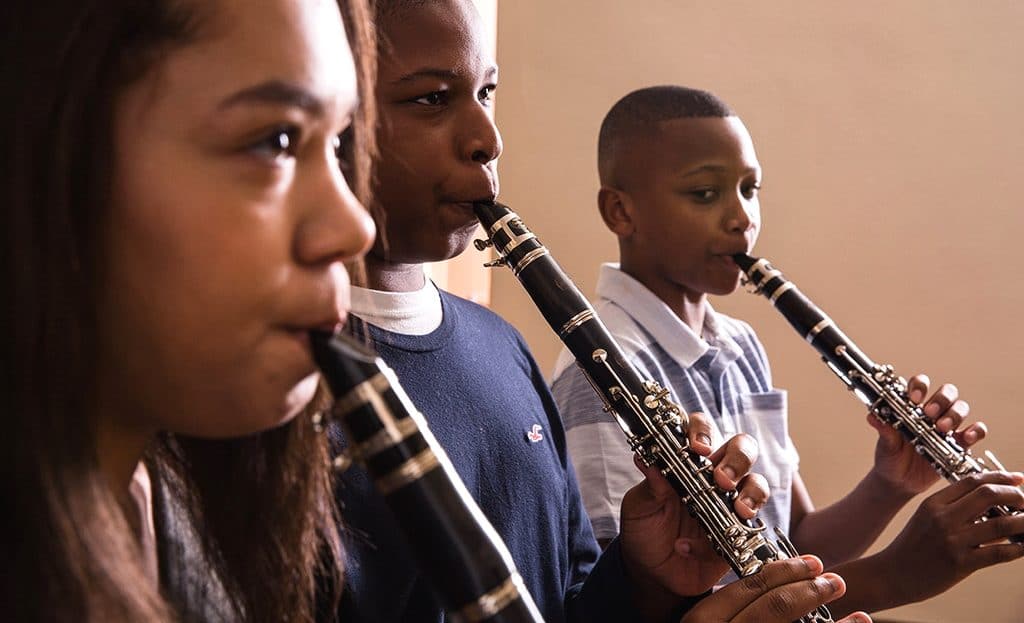
For a more detailed answer, look above. However, the short answer is that the easiest way to know if your clarinet is out of tune is to check it against a tuner, a piano or keyboard, or another clarinet.
Your clarinet’s tuning is dynamic, however, and will change while you’re playing. The more you play your instrument, the more you’ll know what kind of tuning changes to expect.
Learning to listen for proper tuning is one of the most important things you’ll learn as a clarinet player, and you’ll always be listening for adjustments so you can play in tune.
In Conclusion
Tuning your clarinet isn’t very difficult, but it does take some work to learn how to get it right. Every clarinet is a little different, so you’ll also have to learn how to tune a bass clarinet if you decide to switch. Similarly, you’ll have to learn how to tune a contrabass clarinet even if you already know how to tune the other two.
The process is the same, but the instruments themselves are a little different.
We didn’t have time to go into some of the other details, like proper mouth position and how that can affect your tuning, but there’s more than enough to talk about there for a whole additional article.
Hopefully, if you have an instructor, they’ll go over these and other technique differences that can affect the sound, tone, and character of your clarinet, as well as it’s tuning and pitch.
However, not that you’ve read this article, you know the basics of how to tune your clarinet.










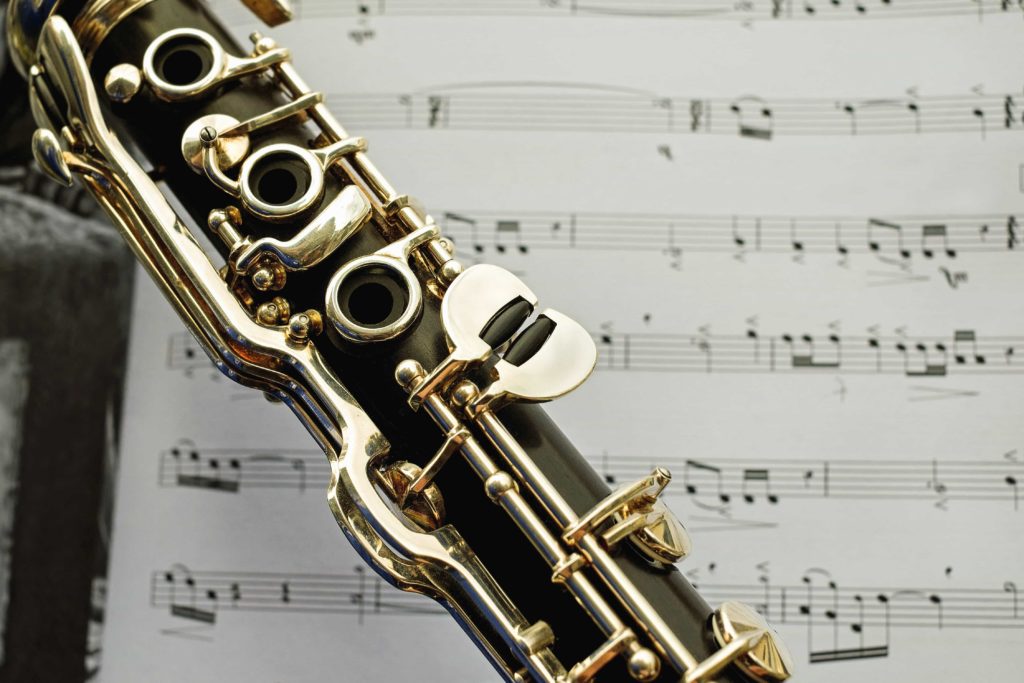



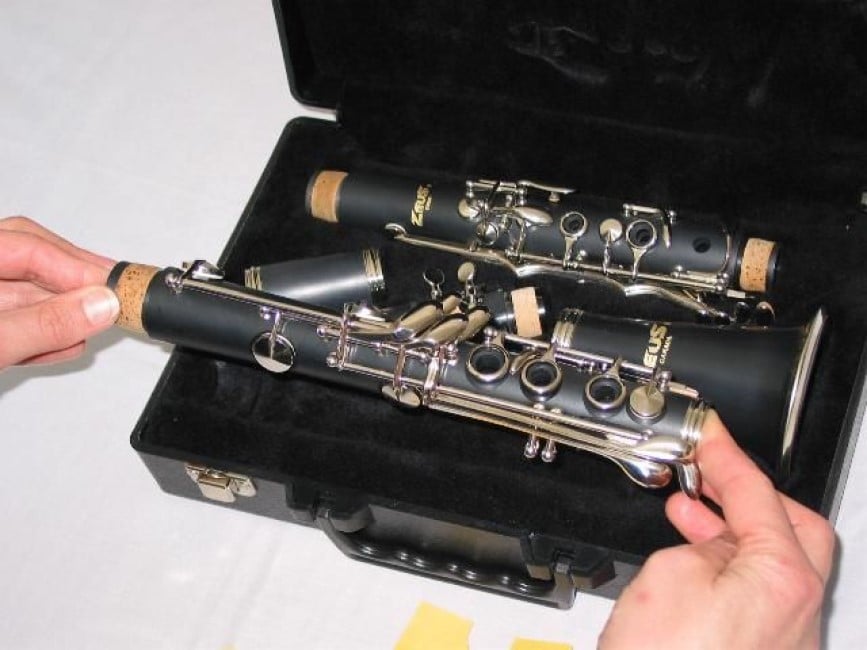

I am a professional clarinet player and I can confirm everything said above. Nice article.